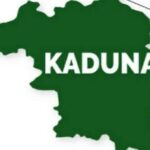In 1976, the law establishing Abuja came into being. It took three years to complete the Abuja Master Plan, which was created in 1979 by International Planning Associates, IPA, with satellite town provisions provided and embedding all the necessary uses.
In doing a plan of a city’s development, we have to take into consideration various uses, e.g. residential, commercial, industrial, recreational uses and for circulation i.e. roads.
- How young entrepreneurs, coders are positioning eNaira as gateway to digital economy
- Concerns over non-assent to Nigerian Startup Bill
FCDA officially accepted the new Abuja Master Plan then and it took up to five years to commence the physical development (1979-1982).
Thus, the implementation commenced, and the first bulldozer to start uprooting a tree was in 1982 on the then Festival Road, now Moshood Abiola Way, Garki 1 district etc.
Subsequently, priority projects continued and as we progressed, we started noticing challenges. Because of growing demand for commercial activities, people started converting residential buildings to commercial ones, thus abandoning the designated commercial areas.
Certain sections of Abuja’s central area were as a result abandoned; there is presently a 12-floor commercial structure finished since 2008 but four floors are still unoccupied.
In Abuja, we have six major roads. On all these roads there is the challenge of conversion of residential to commercial use.
The next challenge to the Abuja Master Plan is development on flood plains. In the central area, we take into cognisance where the water flow will go; it is 100 metres, or beyond in some cases, from the major stream on both sides, no one is allowed to develop there, people are now encroaching illegally, without approval.
Especially along Abuja Airport Road, there is unnecessary flooding. We have seen what happened in Pakistan; we don’t pray for that here.
Other challenges include people encroaching on what we call planning areas. The Abuja Master Plan envisaged four phases initially, and now we’ve introduced Phase 5 because of the pressure of land demand; we are now working on producing a Land Use Plan. Unfortunately people have started development in this area; on areas provided for roads.
Therefore, we have to remove all these illegal structures to serve as a deterrent to others, and the law says we charge the person expenses for the removal.
A master plan is one that encompasses the study of what a particular area is including the future development of that area, and orderly sustainable development in terms of our modern area.
A site analysis is thus required to determine where you are going to place all the necessary uses. There are areas where you cannot put any of these uses; they become like constraints to the development, e.g. where rivers and mountains exist, but we can convert these constraints to opportunities for the benefit of residents.
And where rivers exist, you have to provide a 100-meter space on each side; this will accommodate flooding if it occurs in this flood plain. So, the suitability of the area to accommodate all these uses in any master plan is key.
Another example is if you put a commercial development in a residential area, you have parking challenges, vehicular congestion etc.
We wish to reiterate that for any contravention, the FCTA is impartial and would spare no one.
Tpl. Umar Shu’aibu is the Coordinator, Abuja Metropolitan Management Council (AMMC)

 Join Daily Trust WhatsApp Community For Quick Access To News and Happenings Around You.
Join Daily Trust WhatsApp Community For Quick Access To News and Happenings Around You.


